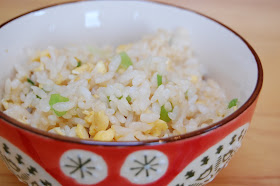If you like good quality sushi in a casual setting then you'll love Michie Sushi. It's not an easy place to find if you're not familiar with the Ranelagh area so make sure to look up the address before going there. It's located down a narrow lane called 11 Chelmsford Lane just off Ranelagh village.
I went there for the first time last month with my husband and little boy. We started with the the salmon and tuna combo (€13.80) and miso soup. We enjoyed this so much that we decided to order more sushi!
And I ordered the Ebi Fry Roll (€11.95). Our little boy tried a bit of everything!
I can honestly say this is one of the best sushi experiences that I've had in Ireland.
Michie also serve traditional hot Japanese dishes. They provide a takeaway, delivery and catering service and won various awards including "The Bridgestone Best in Ireland 2011 & 2012" and the "Regional Winner Dublin Best Casual Dining 2011".
I was delighted to hear that they recently opened another restaurant in Dun Laoghaire in Dublin. I've no doubt Michie's new venture will be a success and wish them the best of luck.
Website: www.michiesushi.com
Facebook: www.facebook.com/michiesushi
Twitter: @MichieSushi
Email: info@michiesushi.com
Phone: (01) 497 6438
Location: 11 Chelmsford Lane in Ranelagh, Dublin 6 and Dun Laoghaire
NOTES: All restaurant reviews posted on this blog are written by me without the prior knowledge of the restaurant. I visit the restaurant as an average customer and always pay for the food!





























